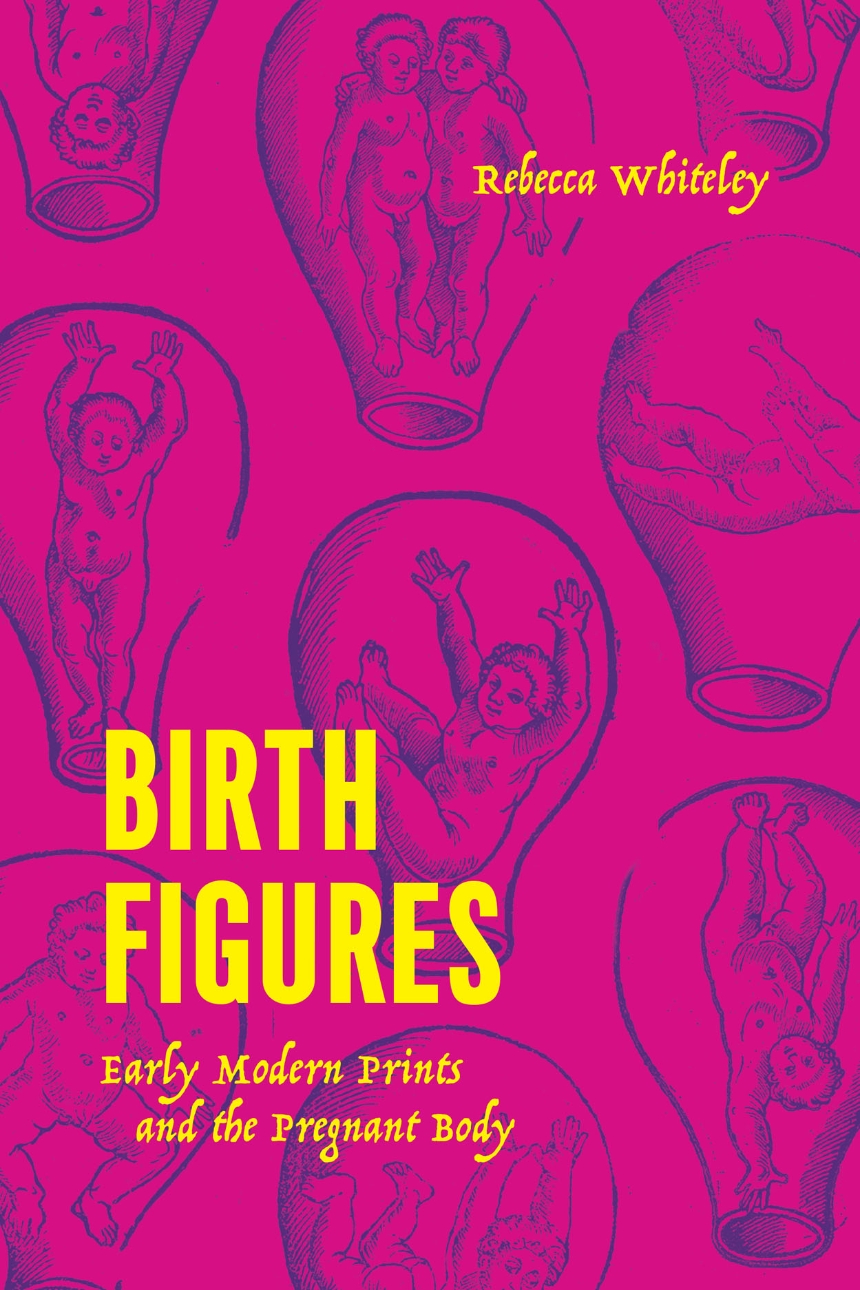Birth Figures
Early Modern Prints and the Pregnant Body
The first full study of “birth figures” and their place in early modern knowledge-making.
Birth figures are printed images of the pregnant womb, always shown in series, that depict the variety of ways in which a fetus can present for birth. Historian Rebecca Whiteley coined the term and here offers the first systematic analysis of the images’ creation, use, and impact. Whiteley reveals their origins in ancient medicine and explores their inclusion in many medieval gynecological manuscripts, focusing on their explosion in printed midwifery and surgical books in Western Europe from the mid-sixteenth to the mid-eighteenth century. During this period, birth figures formed a key part of the visual culture of medicine and midwifery and were widely produced. They reflected and shaped how the pregnant body was known and treated. And by providing crucial bodily knowledge to midwives and surgeons, birth figures were also deeply entangled with wider cultural preoccupations with generation and creativity, female power and agency, knowledge and its dissemination, and even the condition of the human in the universe.
Birth Figures studies how different kinds of people understood childbirth and engaged with midwifery manuals, from learned physicians to midwives to illiterate listeners. Rich and detailed, this vital history reveals the importance of birth figures in how midwifery was practiced and in how people, both medical professionals and lay readers, envisioned and understood the mysterious state of pregnancy.
Birth figures are printed images of the pregnant womb, always shown in series, that depict the variety of ways in which a fetus can present for birth. Historian Rebecca Whiteley coined the term and here offers the first systematic analysis of the images’ creation, use, and impact. Whiteley reveals their origins in ancient medicine and explores their inclusion in many medieval gynecological manuscripts, focusing on their explosion in printed midwifery and surgical books in Western Europe from the mid-sixteenth to the mid-eighteenth century. During this period, birth figures formed a key part of the visual culture of medicine and midwifery and were widely produced. They reflected and shaped how the pregnant body was known and treated. And by providing crucial bodily knowledge to midwives and surgeons, birth figures were also deeply entangled with wider cultural preoccupations with generation and creativity, female power and agency, knowledge and its dissemination, and even the condition of the human in the universe.
Birth Figures studies how different kinds of people understood childbirth and engaged with midwifery manuals, from learned physicians to midwives to illiterate listeners. Rich and detailed, this vital history reveals the importance of birth figures in how midwifery was practiced and in how people, both medical professionals and lay readers, envisioned and understood the mysterious state of pregnancy.
Reviews
Table of Contents
List of Illustrations
A Note on Terminology
Introduction: Picturing Pregnancy
Part I: Early Printed Birth Figures (1540–1672)
Chapter 1: Using Images in Midwifery Practice
Chapter 2: Pluralistic Images and the Early Modern Body
Part II: Birth Figures as Agents of Change (1672–1751)
Chapter 3: Visual Experiments
Chapter 4: Visualizing Touch and Defining a Professional Persona
Part III: The Birth Figure Persists (1751–1774)
Chapter 5: Challenging the Hunterian Hegemony
Conclusion
Acknowledgments
Notes
Bibliography
Index
A Note on Terminology
Introduction: Picturing Pregnancy
Part I: Early Printed Birth Figures (1540–1672)
Chapter 1: Using Images in Midwifery Practice
Chapter 2: Pluralistic Images and the Early Modern Body
Part II: Birth Figures as Agents of Change (1672–1751)
Chapter 3: Visual Experiments
Chapter 4: Visualizing Touch and Defining a Professional Persona
Part III: The Birth Figure Persists (1751–1774)
Chapter 5: Challenging the Hunterian Hegemony
Conclusion
Acknowledgments
Notes
Bibliography
Index
Awards
Historians of British Art: Historians of British Art Book Prize
Honorable Mention
